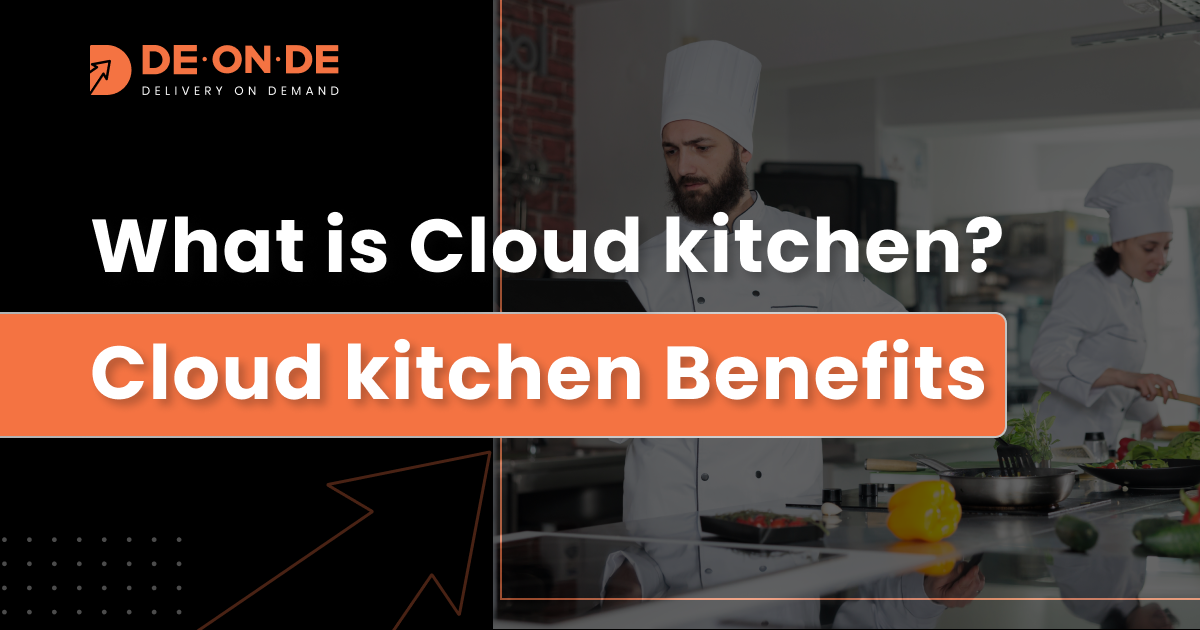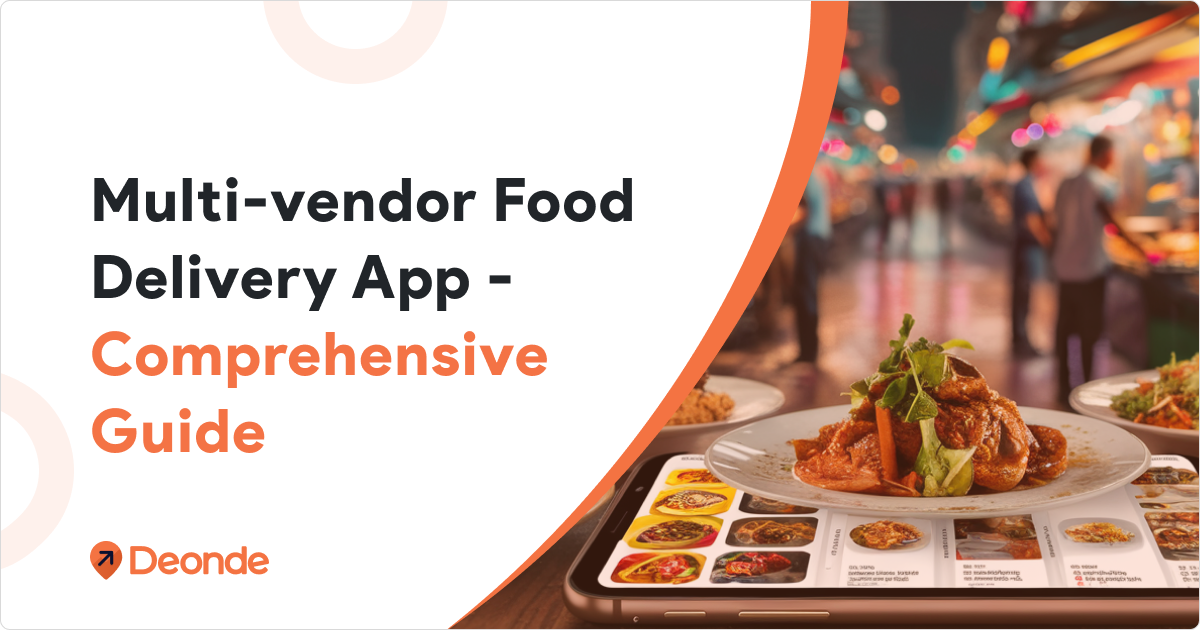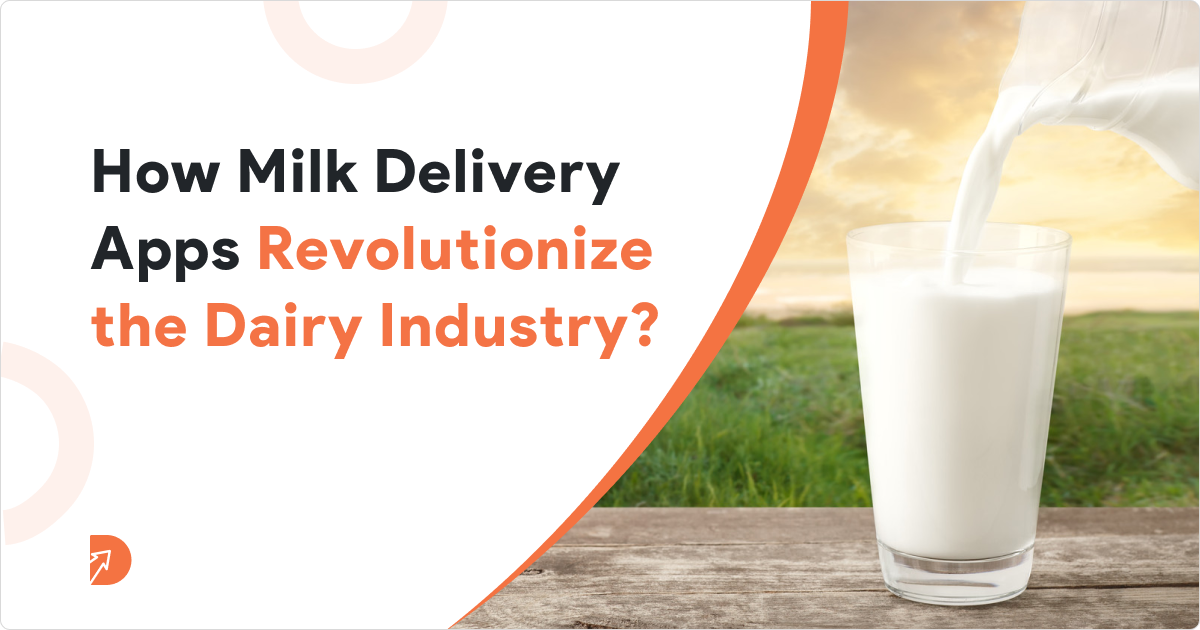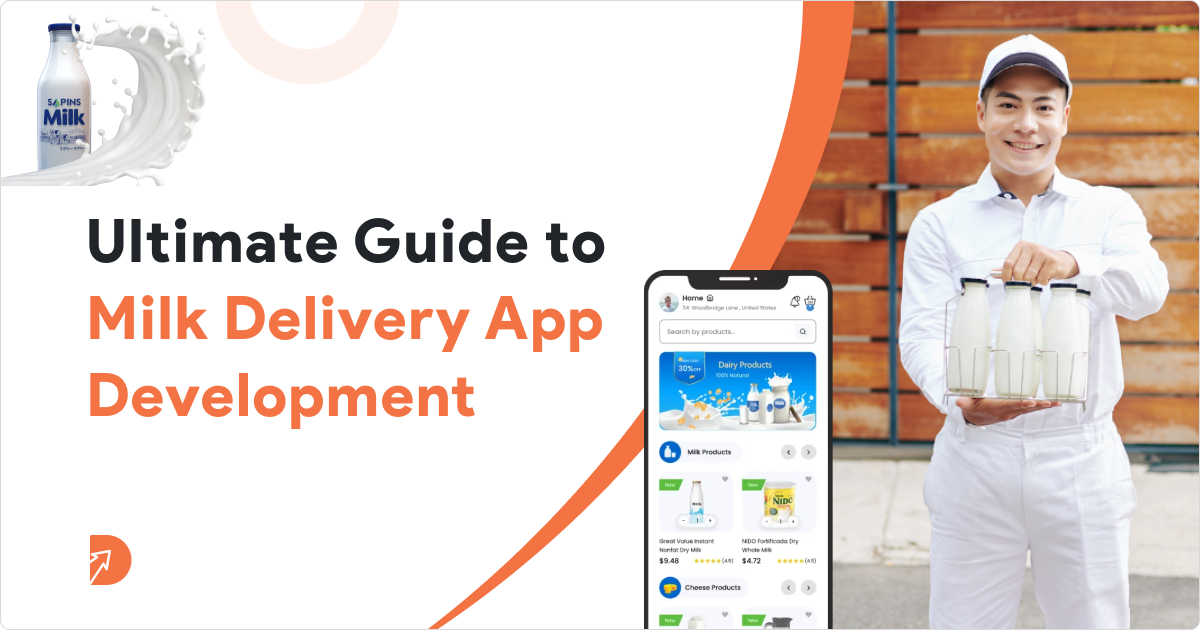The emergence of cloud kitchens has completely revolutionized the food sector in the world. You might wonder, though, what exactly a cloud kitchen is. Consider it a ground-breaking idea that harmoniously fuses technology and food. Virtual kitchens are revolutionizing the market for business owners and foodies, replacing the days when brick-and-mortar eateries dominated the sector.
What is Cloud Kitchen?
A commercial kitchen that uses a third-party delivery Integration to send food to customers is called a cloud kitchen. Cloud kitchens are frequently situated in busy regions close to commercial buildings or college campuses to increase delivery efficiency.
The popularity of cloud kitchens has grown over the past few years due to the expansion of meal delivery services like Uber Eats and DoorDash. Customers can easily order food from their preferred eateries using these delivery services without leaving their homes or places of business.
Some famous examples of Cloud Kitchen Startups are Zomato, Swiggy, Rebel Foods, Kitchens@, and Box8.

Cloud Kitchen Business Models:
Cloud kitchen business models have revolutionized the food sector, which offers delivery-only or takeaway alternatives without requiring a conventional dine-in facility.
These models make the most of technological advancements, data insights, and operational effectiveness to offer various cuisines and increase revenue possibilities. Here are a few prevalent business models for the cloud kitchen:
1. Multi-Brand Cloud Kitchen:
In this paradigm, one cloud kitchen manages several virtual restaurant brands or concepts within a single physical location. Without the need for separate storefronts, the cloud kitchen can accommodate a variety of customer preferences and demographics because each brand offers diverse cuisines.
The multi-brand cloud kitchen makes money by charging the virtual brands using its infrastructure order commissions and kitchen leasing fees. The cloud kitchen can maximize revenue possibilities and optimize kitchen utilization by hosting various brands.
2. Single-Brand Cloud Kitchen:
Under this arrangement, a single restaurant brand or cuisine idea is exclusively produced at the cloud kitchen. The kitchen only prepares and completes orders for that one brand.
The single-brand cloud kitchen also known as Delivery-Only Restaurant makes money via order commissions and can charge the restaurant brand a set monthly cost or a one-time rental fee to use its resources. With this concept, the restaurant can increase its delivery area without adding more physical locations.
3. Franchise Cloud Kitchen:
The franchise cloud kitchen concept enables the operator to provide third-party operators or business owners licenses to use its brand, technology, and operational know-how. These operators use the technology and assistance of the cloud kitchen to manage their delivery-only restaurant brands.
The franchise cloud kitchen earns from the operators’ licensing or franchise fees. The cloud kitchen offers the tools, instruction, and continuous assistance required to uphold brand standards and guarantee uniformity across all franchise sites.
4. Third-Party Delivery Integration:
Some cloud kitchens connect to outside meal delivery services like Uber Eats, DoorDash, and Deliveroo. Cloud kitchens can reach a larger audience by advertising virtual restaurant brands on these sites. The virtual brands pay order commissions and delivery fees to the cloud kitchen, and they may also split revenue from delivery aggregator fees.
What is the Process of Cloud Kitchen?
1. Finalizing the space and location
A cloud kitchen may be set up in smaller spaces due to the absence of a large cooking area. It is simple to set up a cloud kitchen in a 300-square-foot space. Construction, painting, or decorating are not necessary for setting up a cloud. For our cloud kitchen, only a high degree of client demand matters.
2. Get the Required Licenses for your Cloud Kitchen Along with Online Billing Software
A cloud kitchen in India requires the following components:
- FSSAI
- Goods and Service Tax
- Trade License to Do Business
3. Cooperation in Systems with Aggregators
As soon as the location of your kitchen is decided, you must submit a listing because it often takes 7 to 30 days for online aggregation platforms to advertise your kitchen.
You can anticipate paying these companies a fee that ranges from 18 to 30% of the income from each order. That is closely related to the free cloud-based POS billing software for kitchens.
Because it depends on the Internet a cloud kitchen is sometimes called an “Internet First Restaurant” because it depends on the Internet.
4. A Cloud Kitchen Needs Staff
The staff makes a Cloud kitchen successful, but we’ll get to that later. The chef is the most crucial component of the team because they prepare the food and assist with menu planning.
You’ll also need a manager, utility employees, delivery men (if you’re doing the delivery yourself), and the kitchen staff.
The best replacement for conventional delivery services may be third-party delivery services.
5. The POS Billing Software Into Implementation
The administration of your DATA is the most important component of your entire value chain because Cloud Kitchen is a data and brand business.
For the Internet delivery system, food orders must be approved. Keep closely checking how many online orders are coming in from different sources. Order monitoring and thorough reporting are essential for a restaurant’s kitchen to run smoothly.
Make sure the cloud kitchen POS you select can be customized to meet the requirements of your online ordering platform. You could be able to inform your customers about specials and loyalty benefits with free cloud kitchen POS billing software.
6. Cooking Utensils, Ingredients, and Packaging Needs
Your kitchen setup expenses may change if you plan to serve a range of cuisines. The cost of setting up an online cloud kitchen to sell fast food or single meals is no more than Rs 5,000. Purchasing old tables, racks, and storage shelves in addition to brand-new electrical goods is one approach to saving money on equipment. Using large appliances like a chimney, deep freezers, and hob burners may result in higher costs. Don’t forget to factor in the price of the online billing software.
7. Branding, Story Development and Promotion
The second half of the data is the BRAND. Cloud kitchens don’t offer any invisibility compared to eateries with physical locations. This is why it is important to have a strong online presence. Tools for managing your brand’s online reputation, such as social networking, Google My Business, and internet aggregator listings, may be useful.

What is the Objective of Cloud Kitchen?
- Simplified Operations: To ensure effective and prompt delivery to clients, optimize the operations for food manufacturing and order fulfillment.
- Cost-Efficiency: Reduce overhead expenses like rent, utilities, and front-of-house staff costs from operating a traditional restaurant.
- Increasing Audience: Use online meal delivery services to reach a larger audience outside the kitchen’s vicinity, possibly including many delivery zones.
- Menu Diversification: Expand food options and appeal to a variety of client preferences by offering a variety of cuisines and food concepts from a single cooking space.
- Data-Driven Insights: Make educated menu modifications and focused marketing initiatives possible by utilizing data analytics to comprehend customer preferences, ordering habits, and demand trends.
- Scalability and Adaptability: Easily scale the business up or down in response to consumer demand without being constrained by a physical location.
- Improved Customer Experience: Emphasize giving patrons who prefer food delivery or takeaway choices a seamless, practical, and tailored dining experience.
- Branding opportunities: Develop a strong online brand presence and reputation via online platforms, client testimonials, and social media marketing.
- Collaborations and Partnerships: Work with third-party delivery aggregators and other food-related firms to increase reach and look into new revenue streams.
- Maximising Kitchen Utilisation: Share kitchen resources and spaces among many brands or virtual restaurants to maximize kitchen utilization.
What Are the Benefits of Cloud Kitchen?
1. Reduced Investment and Overhead Costs
The cloud kitchen concept has relatively minimal operational costs for the company. Since a dine-in environment is not required, money can be saved on the seating area, maintenance and interior design of the establishment, front-of-the-house employees, and equipment (such as tables, chairs, pricey silverware, utensils, etc.)
2. Reasonable Pricing
The dark kitchen enterprise may serve high-quality cuisine at a far lower cost since its operational expenses are considerably lower than those of a restaurant that offers delivery in addition to the dine-in option. Businesses operating online kitchens benefit by gaining a competitive edge and raising their profit margin.
3. Run and Oversee Several Brands Easily
Operating several brands with physical dine-in locations for each of the brands costs a lot of money. However, with “dark kitchens” or “virtual restaurants,” it is possible to manage several brands under one roof without making a significant financial commitment.
4. Common Kitchen for Several Businesses
Numerous enterprises might share a single cloud kitchen because no one would go there to eat. It enables these companies to reduce expenses.
5. Simple To Launch A Business
Shadow kitchens operate under the delivery-only paradigm, enabling anybody to establish a business from their kitchen.
6. Increased Effectiveness
Ghost kitchens are created specifically to handle orders that can only be delivered. Therefore, it is simple to have tools, equipment, or packing materials close at hand, prepare meals in bulk, and complete orders considerably more quickly than typical restaurants that offer delivery.
ALSO READ: Ghost or Cloud Kitchen Vs Dine-in Restaurant: What is the major difference?
7. Menu Modularity
More easily updated than the traditional menus found in eateries, a menu offered on a meal ordering website or app. One must reproduce the new menus for even the smallest changes to the actual menus, which takes time and incurs additional printing costs. However, it is simple and free to update the menus of the cloud kitchens on the website or mobile app. It enables owners of cloud kitchen companies to experiment with their menus in response to shifting consumer trends.
8. Wider Brand Recognition
One can connect with a huge online customer base by using the virtual kitchen concept. Traditional brick-and-mortar restaurants that prepare their food for delivery can benefit from good online and mobile business exposure. More clients are attracted due to the new marketing channels, which increases revenue.
9. Expandable
You can see how much commercial scalability this idea offers after looking at the various cloud kitchen business concepts. You may easily scale up your firm, regardless of how tiny a start you make. Given the enormous development potential, it would be wise to invest in the dark kitchen concept.
Leverage The Benefits of the Cloud Kitchen!
With the help of the ground-breaking idea of cloud kitchens, it is now simple for consumers to eat food of restaurant caliber at home. Eateries can increase their customer base using cloud kitchens by offering their services online and lowering the costs of operating a physical restaurant. Lower overhead expenses, enhanced productivity, better scalability, increased client convenience, and improved customer service are all benefits of cloud kitchens.
Cloud kitchens are a desirable choice for restaurateurs trying to maximize revenues while supplying high-quality meals at reasonable pricing because of all these characteristics.




